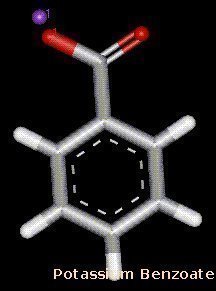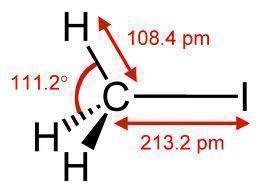Potassium carbonate dihydrate (K2CO3.2H2O) is a white chemical. Salt from potassium carbonate and water from the dihydrate are mixed into a deliquescent (wet salt). It is a strong alkaline solution that garners a variety of uses. The salt tastes like salt and alkaline material.
Potassium carbonate dihydrate is generally used as a nutritional supplement in livestock feed. It has several other uses when the water molecules are removed from the potassium carbonate dihydrate. When more water is added to potassium carbonate dihydrate, it dissolves into a solution. In its near dry state, potassium carbonate dihydrate can be used to produce soaps and glass.
The History of Potassium Carbonate
In 1742, Antonio Campanella discovered potassium carbonate and found it to be the primary component of potash. Pearlash (salts of tartar) is created from potash via heating potash in a kiln to remove the impurities. Pearlash is what was used to bake quick breads before baking powder was discovered in the late 18th century.
Potassium carbonate is also known as:
- Carbonate of Potash
- Potash
- Dipotassium Carbonate
- Dipotassium Salt
- Pearl Ash/Pearlash
- Salt of Tartar
- Salt of Wormwood
- Production of Potassium Carbonate
Producing potassium carbonate is simple enough and can be done via electrolysis. Electrolysis produces potassium carbonate in commercial quantities by running an electrical current through potassium chloride. The process creates a byproduct of potassium hydroxide, which is then mixed with carbon dioxide to produce potassium carbonate and water.
The resulting chemical formula is:
2KOH + CO2 ? K2CO3 + H2O
Potassium Carbonate Uses
Since potassium carbonate is so versatile, it can be used in food, the lab, fire control, etc.
In Food
When potassium carbonate is mixed with water, there is an exothermic reaction that causes it to heat up. This process causes a rise in temperature but is not a suitable for heating something up because the reaction only lasts for a short time.
Potassium carbonate dihydrate is a suitable electrolyte replacement when used in generators and other devices that run on the electrolyte solution processes. It is a much safer alternative to potassium hydroxide, which is used more frequently in batteries and other applications.
Potassium carbonate can be used in food production. A common Asian cuisine that uses potassium carbonate is grass jelly. A neutral tasting mint-like herb is generally used to prepare it. It is commonly grouped with a variety of fruits and sweets as a desert dish or eaten plain as a medicine. Potassium carbonate is still commonly used as a baking ingredient in thick breads such as gingerbread.
Potassium carbonate can be used as a buffering agent to produce mead or wines. The buffering raises the pH (increasing alkalinity) so the wine or mead is not too acidic once production is complete. The proper amount can be measured based on how the mead or wine must be produced and the quality of the PH that is necessary.
In The Lab
Potassium carbonate is a suitable replacement for calcium chloride and magnesium sulfate when used as a drying agent in the lab. It is not a good replacement if the material that needs to be dried is acidic. The organic drying phase can be done with the potassium carbonate to carefully remove small traces of acidic impurities for better preservation of dried specimens.
In the nuclear fusion field, potassium carbonate can be formed into an electrolyte that aids in cold fusion experiments. The electrolyte is used in the calorimeter along with heavy water to measure heat. It can also be used in hydrogen production, which can be used in different ways with an electrolysis setup.
Potassium carbonate is used to maintain the anhydrous (without water) conditions possible when used in a way that will not react with other reactants or any products that are formed from the processing of said reactants. Potassium carbonate can also be used to dry ketones, alcohols, and amines before they are distilled.
As a Fire Extinguisher/Retardant
Potassium carbonate can be used in extinguishers to out high heat flame fires (such as oil fires and other types of class B fires). The chemical acts as a fire suppressant/fire proof coating and is very useful for extinguishing and preventing the spread of fire. It can be used in both liquefied (aqueous) and dry states in fire extinguishing. It is two times more effective than baking soda on oil and gas based fires.
General Usage
The pearlash can be used to produce soaps, glasses, and china porcelain. An appropriate amount of the pearlash is necessary to get the desired consistency in each.
Pearlash can be added in measured amounts to hard water in order to soften it. Pearlash prevents heavy concentrations of calcium, magnesium, and other ions in hard water. Hard water can cause corrosion in galvanic metals, prevent the desired usage of soaps, build up scale minerals, and cause bad skin reactions.
Potassium carbonate can also be used as an ingredient in welding fluxes and for coating flux on welding rods. The flux coatings prevent oxidation that may occur at a welding site. They reduce the incidence of oxidation, which could weaken the weld.




Taha
Hello
Could you please let me know where I can buy pottasium carbonate dihydrate from?
Ekhlass Nassar
please inform me about potassium carbonate:
I want to use it in an organic reaction, is it important to heat Potassium carbonate before using or not?
Thank you in advance
Dr. Ekhlass Nassar